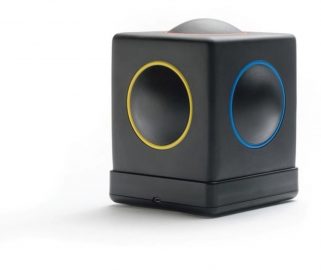Music and Assistive Technology
Research article  Open access |
Available online on: 30 March, 2020 |
Last update: 28 October, 2021
Open access |
Available online on: 30 March, 2020 |
Last update: 28 October, 2021
 Music can serve as a powerful, comforting and motivating medium to empower and improve the well-being of Persons with Disabilities (PWD). The process of playing music can encourage behaviours like cooperation and turn-taking as completion of a musical piece can often involve teamwork with others where each person plays a beat or musical instrument to achieve the final musical arrangement.
Music can serve as a powerful, comforting and motivating medium to empower and improve the well-being of Persons with Disabilities (PWD). The process of playing music can encourage behaviours like cooperation and turn-taking as completion of a musical piece can often involve teamwork with others where each person plays a beat or musical instrument to achieve the final musical arrangement.
Music can provide people with developmental and learning disabilities with opportunities to interact and cooperate with those who do not experience these forms of disabilities. Playing music in a group has the ability to give PWDs involved a sense of equal empowerment by offering a platform for equivalent participation in achieving the outcome. Through music, people can have diverse opportunities to express and experience various emotions. The desire to participate in music, as well as to produce musical pieces, may become mediums to control emotional outbursts especially for those with behavioural and cognitive challenges.
For about a decade, the Assistive Technology (AT) industry has been developing various innovative solutions to empower PWDs to play music. Such solutions often involve various combinations of sensors and input methods (e.g. body movement, switches, etc.) to allow individuals with a varying range of movements and cognitive skills to compose music effectively. These AT solutions enable the PWDs to experience the creation of music in their own unique ways. Some examples of such AT are:
• Soundbeam is a touch-free device which uses sensor technology (ultrasonic beams) and adapted switches to translate body movement into music and sound. it gives children and adults the opportunity, regardless of the impairments of their range of dexterity.
• Magic Flute is an electronic wind instrument that enables people to play music with small movements of the head. The flute is rotated up and down to change pitch and the strength of the breath controls the volume. The Magic Flute enables individuals to play music without the need for any kind of limb movements.
• Skoog is a tactile cube that has a dome switch on each of its sides (except for its base). The device connects with tablets or computers using Bluetooth allowing the user to play customized music by pressing the dome switches individually or in combination.
• Novation LauchpadX is a 64-pad Music Instrument Digital Interface (MIDI) grid controller for Ableton Live. It can launch, play and perform selected sounds and build tracks using the large, super-sensitive RGB pads, dynamic note and scale modes, and mixer controls.
• E-Scape music software has been specifically designed to be used by the widest range of people with disabilities to create or perform music. PWD users can compose unaided, as the system is operated via a series of pop-up menus to guide them through operations and choices. Menus are controllable using a variety of methods, e.g. one or more switches, mouse, keyboard, eye-gaze, or MIDI controllers or sensors.
Music is a powerful tool to help develop effective educational and social skills. Access to creating and listening to music may effect changes in skill areas that are important for people with a variety of forms of disabilities such as learning disabilities, intellectual disabilities, cerebral palsy, autism and many others. Participation in music for PWD gives them a sense of control which make them feel empowered and motivated to share experiences while accomplishing their goals.
Music is also an effective way to stimulate and focus a person’s attention and might be particularly significant for some people who may not respond to other types of stimuli. Musical activities can also often improve interaction and communication skills as it facilitates to be an integral part of a wider group (e.g. musical band, etc.). Other notable benefits of music are its effect towards helping to maintain one’s attention, and lower anxiety levels by engaging their cognitive focus. Furthermore, music can be an impactful medium to provide an avenue of nonverbal communication for people with learning and communication disabilities. Successful participation with music for many PWDs can lead to a positive effect on self-esteem and thus an improved quality of life.
